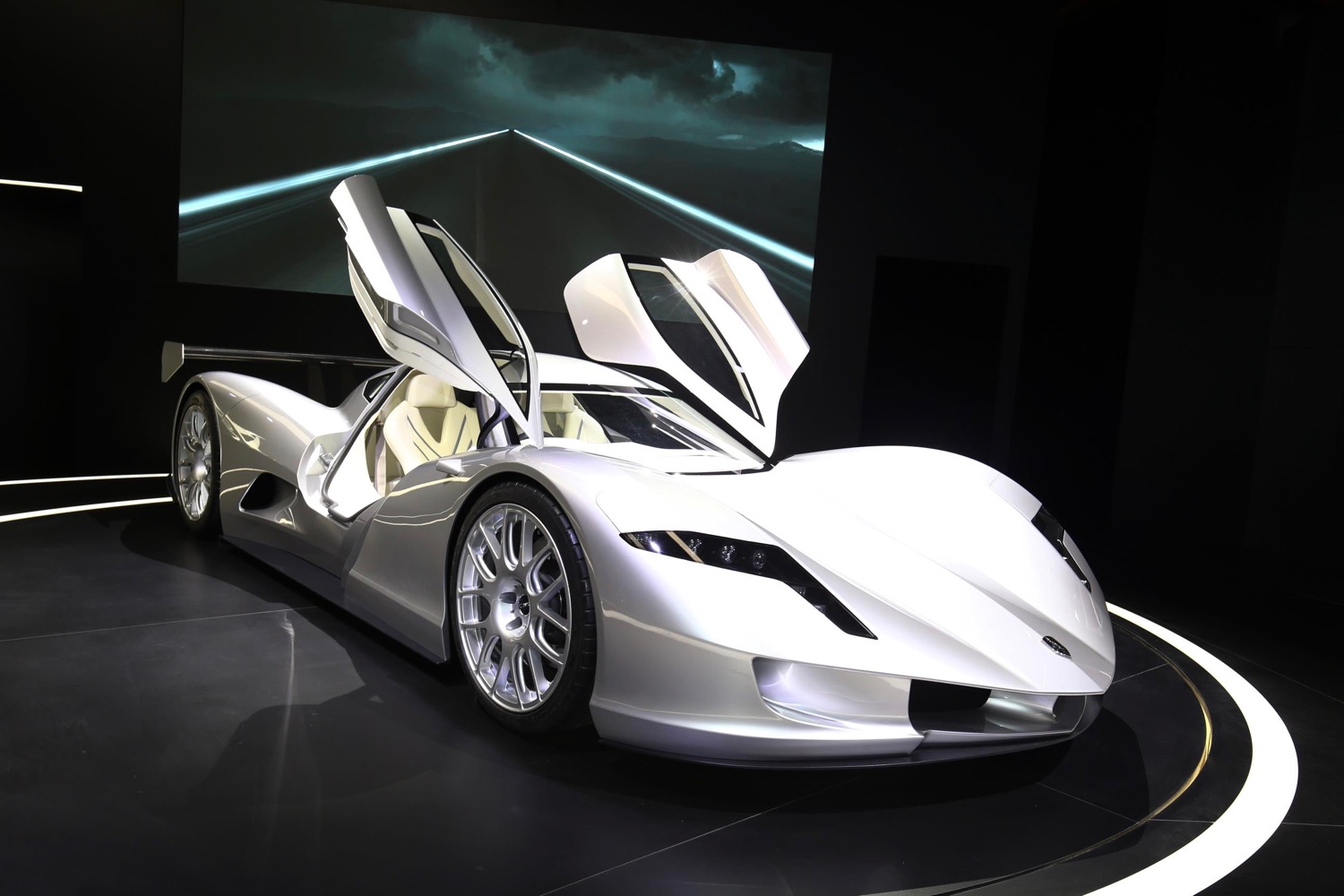
A Japanese electric supercar will head to the Nürburgring to attack the legendary German racetrack’s lap record. The Aspark Owl will hit the track in March 2020, Aspark boss Masanori Yoshida said in an interview with Top Gear. A lap record would give newcomer Aspark some credibility, and strike another blow for electric cars against internal combustion.
Aspark didn’t specify which lap record it would aim for, but it’s probably safe to rule out the overall record set by the Porsche 919 Hybrid, or the electric record set by the Volkswagen ID R Those records were set by purpose-built race cars, but the Owl is a production model (albeit a very extreme one). Aspark will likely go for the production-car lap record of 6 minutes, 40.3 seconds set by a Porsche 911 GT2RS MR in 2018. The Owl wouldn’t be the first car to hold that record: the Nio EP9 briefly had bragging rights before being surpassed by internal-combustion cars.
On paper, the Owl seems to have what it takes to be a Nürburgring record holder. Aspark just unveiled the production-ready version at the 2019 Dubai Motor Show (a concept version first appeared in 2017) with a claimed 2,012 horsepower and 1,475 pound-feet of torque. That tops other recently announced electric supercars, including the Lotus Evija and Rimac Concept Two. Aspark claims the Owl will do zero to 60 mph in 1.69 seconds, which would make it the quickest-accelerating car in production. A claimed top speed of 248 mph puts the Owl in some elite company as well.
These specs theoretically make the Owl capable of being the fastest production car around the Nürburgring — gasoline or electric. That means it would leapfrog Tesla’s attempt to set a record strictly for electric production cars with its Model S. Tesla’s lap times have been in the seven-minute range, which would still be enough to beat the 7:42 lap time set by the Porsche Taycan.
Aspark claims the Owl has a range of up to 280 miles, but that probably won’t be achievable when driving aggressively. Just 50 cars will be built, priced at 2.9 million euros ($3.2 million). Aspark isn’t alone in unveiling an expensive electric supercar with big performance claims. The Owl faces competition from Lotus and Rimac, as well as the next-generation Tesla Roadster and the upcoming Pininfarina Battista.


